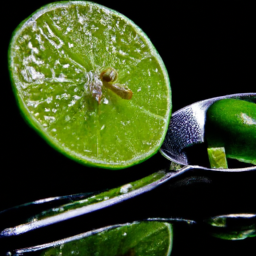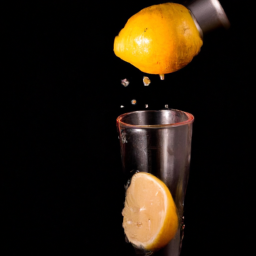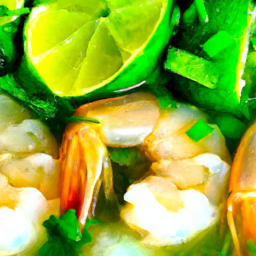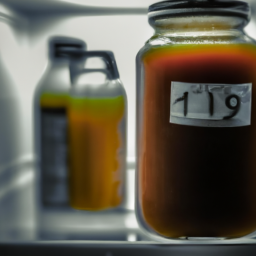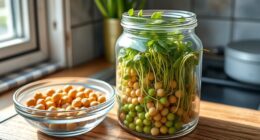As someone who loves starting my day with a glass of orange juice, I often think about what factors affect its price. With so many different types of orange juice available in stores, it can be challenging to determine which one offers the best value for your money.
In this article, I aim to provide a comprehensive guide on the price of orange juice, including the various factors that influence it and tips on how to save money while still enjoying your favorite drink.
Orange juice is a popular beverage worldwide, known for its refreshing taste and nutritional benefits. However, the price of orange juice can vary significantly depending on several factors. These factors could include the type of orange juice, its quality, and the location of where it’s sold.
As someone who is interested in knowing how much orange juice costs and who wants to make informed purchasing decisions, it’s important to understand these factors and how they affect the price of orange juice.
So, let’s dive in and explore the world of orange juice and its pricing.
Key Takeaways
- Store-bought orange juice prices vary based on brand, container size, and type, with a 64-ounce container ranging from $2.99 to $7.99.
- Tropicana, Simply Orange, and Florida’s Natural are some of the best brands to look for when purchasing orange juice.
- Frozen orange juice is a convenient and cost-effective option that can be stored for months, while frozen orange juice concentrate is versatile and used in various recipes.
- Organic orange juice is made from organically grown oranges and is free from synthetic pesticides and fertilizers, but may have a higher cost than non-organic options.
Overview of Orange Juice
Orange juice is a popular breakfast beverage that’s often enjoyed alongside pancakes and bacon. However, it’s more than just a tasty drink. Orange juice is packed with health benefits and nutritional value that make it an excellent choice for starting your day.
For example, it’s rich in vitamin C, which supports a healthy immune system, and it also contains potassium, folate, and thiamine, which are all essential nutrients for our bodies.
But how is orange juice made and distributed to consumers? The orange juice production process begins with harvesting the oranges, which are then washed and squeezed to extract the juice. The juice is then pasteurized to eliminate any harmful bacteria and packaged for distribution.
The supply chain for orange juice is complex, with oranges being grown in different regions and transported to processing plants before being distributed to retailers. All of these steps can affect the price of orange juice, which brings us to the next section about the factors that influence its cost.
Factors that Affect Orange Juice Prices
You’ll notice that the price of orange juice can fluctuate based on a variety of factors. One of the main factors affecting orange juice prices is seasonality. In the winter months, oranges are in peak season and there is an abundance of supply, which often leads to lower prices. In contrast, during the summer months, there is less supply, which can drive up the price of orange juice.
Another factor that affects orange juice prices is supply and demand. If there’s high demand for orange juice and a limited supply, prices will likely increase. On the other hand, if there’s a surplus of oranges and low demand for orange juice, prices may decrease.
Additionally, the cost of production can also impact the price of orange juice. Factors such as labor costs, transportation costs, and the cost of packaging materials can all contribute to the final price of orange juice.
When it comes to fresh-squeezed orange juice, there are additional factors that can affect pricing. Stay tuned to learn more about the difference between fresh-squeezed orange juice and store-bought orange juice and how that impacts the price.
Fresh-Squeezed Orange Juice
If you’re looking for a taste that’s fresh and invigorating, nothing beats a glass of homemade orange juice. The juicing techniques used to make this type of juice ensure that the flavor is at its peak and the nutritional benefits are maximized.
Fresh-squeezed orange juice is rich in vitamins and minerals such as vitamin C, potassium, and folate. These nutrients are essential for maintaining a healthy immune system, promoting healthy digestion, and reducing the risk of chronic diseases.
When making fresh-squeezed orange juice, it’s important to use high-quality oranges that are ripe and juicy. The juicing process can be done by hand, using a citrus juicer, or a high-powered juicer. The type of equipment used will determine the amount of pulp in the final product. Some people prefer their juice with pulp, while others prefer it without.
Either way, fresh-squeezed orange juice is a delicious and healthy beverage option. Moving on to the next section about store-bought orange juice, it’s important to note that while it may be convenient, it often lacks the nutritional benefits of fresh-squeezed juice.
Store-Bought Orange Juice
I love drinking orange juice, but sometimes it’s just not practical to squeeze my own.
That’s where store-bought orange juice comes in.
There are a few different types to choose from, including pulp-free, low-pulp, and high-pulp.
Prices can vary depending on the brand and the size of the container, but generally range from about $2 to $6.
Types of Store-Bought Orange Juice
There are various types of store-bought orange juice available, with pulp-free being the most popular option, accounting for about 50% of sales. Here are some other types of orange juice you might come across:
- Low-pulp orange juice: This type of orange juice has some pulp, but not as much as the high-pulp variety.
- High-pulp orange juice: This type of orange juice has a lot of pulp, which some people prefer for the added texture.
- Calcium-fortified orange juice: This type of orange juice has added calcium to increase its nutritional value.
- Organic orange juice: This type of orange juice is made from organically grown oranges and is free from synthetic pesticides and fertilizers.
When it comes to flavor profiles, store-bought orange juice can vary depending on the type. Pulp-free orange juice typically has a sweeter taste, while high-pulp orange juice has a more complex flavor. In terms of nutritional value, orange juice is a good source of vitamin C and other nutrients, but it can also be high in sugar.
Moving on to the topic of price range, it’s important to note that the cost of orange juice can vary depending on the brand, type, and size of the container.
Price Range
The cost of store-bought orange juice can vary greatly based on factors such as brand, container size, and type. In general, a 64-ounce container of orange juice can range from $2.99 to $7.99, with organic and high-pulp varieties being on the higher end of the spectrum.
Store-bought orange juice can be a good source of vitamin C and other essential nutrients. However, it’s important to choose brands that don’t have added sugars or artificial flavors. Some of the best brands to look for include Tropicana, Simply Orange, and Florida’s Natural.
It’s important to note that while frozen concentrates may be cheaper than store-bought options, they may not provide the same level of nutritional benefits.
Frozen Orange Juice
You can almost taste the sweet tanginess of frozen orange juice as it sits in the carton in your freezer. It’s a convenient option for those who don’t have the time or equipment to juice fresh oranges.
Here are some reasons why frozen orange juice might be a good choice for you:
- It’s easy to store: Frozen orange juice can be kept in the freezer for months, so you can always have it on hand.
- It’s cost-effective: Buying frozen orange juice concentrate is often cheaper than buying fresh oranges or using a juicing machine.
- It’s consistent: Frozen orange juice concentrate is made from a blend of oranges, so you can expect a consistent taste and quality every time.
- It’s versatile: Frozen orange juice concentrate can be used in a variety of recipes, from smoothies to cocktails to marinades.
- It’s convenient: With frozen orange juice concentrate, you don’t have to worry about squeezing oranges or cleaning up a juicing machine.
Speaking of juicing machines, let’s move on to concentrated orange juice.
Concentrated Orange Juice
Moving on from frozen orange juice, let’s talk about concentrated orange juice. Concentrated orange juice is made by removing the water content from freshly squeezed orange juice. This process makes the juice more concentrated and easier to store for long periods. To use it, you simply need to add water to the concentrate in a process called reconstitution.
Reconstitution process is simple, you just need to mix the appropriate ratio of concentrate and water together. The ratio will depend on the brand and type of concentrate you have. It is important to read the label carefully to ensure that you are mixing it correctly. Concentrated orange juice has a longer shelf life than fresh orange juice, but it is important to note that it may not have the same nutritional value as fresh juice. Some of the nutrients may be lost during the concentration process.
Moving on to the next topic, let’s talk about organic orange juice.
Organic Orange Juice
Now that we’ve covered concentrated orange juice, let’s dive into the world of organic OJ and discover its unique benefits.
Organic orange juice is made from oranges that aren’t grown with synthetic fertilizers, pesticides, or other harmful chemicals. The fruit is harvested and processed using natural methods that ensure the preservation of its nutritional value and flavor.
One of the key benefits of organic orange juice is that it’s certified organic. This means that it’s been independently verified to meet strict standards set by the USDA. Organic certification ensures that the product is free from harmful chemicals and is produced using sustainable farming practices.
In addition, organic orange juice is packed with vitamins, minerals, and antioxidants that are essential for maintaining good health. It’s a great source of vitamin C, which helps boost the immune system and promotes healthy skin, hair, and nails.
When it comes to comparing prices of different types of orange juice, there are many factors to consider. While organic orange juice may be more expensive than its non-organic counterparts, the health benefits make it worth the investment. Plus, many retailers offer discounts and promotions on organic products, making it more accessible and affordable for consumers.
So, if you’re looking for a delicious and healthy way to start your day, consider switching to organic orange juice.
Comparing Prices of Different Types of Orange Juice
When it comes to buying orange juice, I always compare the cost per ounce and cost per serving for different types. This helps me make an informed decision on which product provides the best value for my money.
By analyzing the data-driven information on pricing, I can ensure that I’m getting the most for my money and enjoying my orange juice without breaking the bank.
Cost per Ounce
Hey, did you know that you can get orange juice for as low as 5 cents per ounce at some grocery stores? That’s right! The average price of orange juice per ounce is around 10-15 cents, but if you do some price comparison, you can find some great deals.
Here are two sub-lists to help you make the most of your orange juice budget:
- Look for store brand orange juice. It’s often cheaper than name brand options, but just as delicious.
- Check for sales and coupons. You can often find deals on orange juice, especially during peak citrus season.
Now, let’s talk about cost per serving.
Cost per Serving
The most cost-effective way to budget for your daily dose of Vitamin C is by calculating the cost per glass of your preferred citrus beverage. While calculating the cost per ounce is important, understanding how much you’re paying per serving will give you a better idea of how much you’re spending on a daily basis.
It’s important to take into account the nutritional value and health benefits of orange juice when calculating the cost per serving. One glass of orange juice provides 100% of your daily recommended intake of Vitamin C, which is important for maintaining a healthy immune system. Additionally, orange juice contains potassium, folate, and other nutrients that are beneficial for overall health. By factoring in these benefits, you can justify spending a little extra on a high-quality orange juice that provides more nutritional value per serving.
When it comes to saving money on orange juice, there are a few tips to keep in mind. One way to save is by purchasing frozen orange juice concentrate, which can be a cheaper option than buying pre-made juice. Another option is to buy in bulk and freeze extra juice for later use.
By being mindful of the cost per serving and implementing these money-saving tips, you can enjoy the health benefits of orange juice without breaking the bank.
Tips for Saving Money on Orange Juice
When it comes to saving money on orange juice, there are a few key strategies that I’ve found to be effective.
First, buying in bulk can often be a great way to save money per unit.
Additionally, keeping an eye out for coupons or promotions can lead to significant savings.
Finally, making your own orange juice can be a cost-effective alternative to buying pre-made juice.
By utilizing these tips, you can enjoy your orange juice without breaking the bank.
Buying in Bulk
Purchasing orange juice in bulk can save you money in the long run, so it’s worth considering if you drink it regularly. Here are a few reasons why:
- Saves time: Buying in bulk means you’ll have to make fewer trips to the store, which can save you time and gas money.
- Less packaging waste: By purchasing larger containers, you’ll be reducing the amount of packaging waste generated from individual servings.
- Ensures availability: If orange juice is a staple in your household, buying in bulk means you’ll always have it on hand without worrying about it being out of stock.
- Lower cost per serving: Buying in bulk typically means a lower cost per serving, which can add up to significant savings over time.
When considering buying in bulk, it’s important to think about your buying habits and storage options. Make sure you have enough space to store the larger containers, and that you’ll be able to use the juice before it spoils. Additionally, be mindful of your consumption habits to ensure that you’re not wasting any of the juice you purchase.
Using coupons or promotions can also help save money on orange juice, and it’s worth exploring in addition to buying in bulk. By combining these strategies, you can maximize your savings and enjoy a refreshing glass of orange juice without breaking the bank.
Using Coupons or Promotions
You can save a bundle by taking advantage of special deals and discounts on this popular breakfast beverage. Maximizing savings is easy when you keep an eye out for coupons and promotions from your local grocery store or favorite orange juice brand. Timing is everything when it comes to promotions, so be sure to plan your purchases accordingly.
One strategy is to stock up on orange juice during seasonal sales, such as back-to-school season or holiday promotions. Another option is to sign up for loyalty programs or email newsletters from your preferred brands to receive exclusive discounts and offers. By combining these savings opportunities with buying in bulk, you can save even more in the long run. Take a look at the table below to see some examples of current deals and promotions on orange juice.
| Brand | Promotion | Savings |
|---|---|---|
| Tropicana | Buy One, Get One Free | Up to $4.99 |
| Simply Orange | $1.00 off | Up to $3.50 |
| Minute Maid | 2 for $5.00 | Up to $1.98 |
| Florida’s Natural | $0.50 off | Up to $1.50 |
So, why not try out some of these deals and see how much you can save? And if you’re really looking to cut costs, why not consider making your own orange juice? It’s easier than you might think and can be a fun and healthy activity for the whole family.
Making Your Own Orange Juice
If you’re feeling adventurous in the kitchen, why not try whipping up your own delicious and fresh glass of OJ? Making your own orange juice is not only a fun and rewarding experience, but it also allows you to control the ingredients and ensure that you’re getting the freshest and healthiest juice possible.
To make your own orange juice, you’ll need a juicer. There are many different types of juicers on the market, but I recommend investing in a high-quality juicer that can handle a variety of fruits and vegetables. Some popular juicer recommendations include the Breville Juice Fountain, Omega J8006HDS, and the Hurom H-AA Slow Juicer.
One of the benefits of making your own orange juice is that you can experiment with adding other fruits to create unique and delicious flavor combinations. For example, you could add a handful of strawberries or blueberries to your orange juice for a sweet and tangy twist. Or, you could add a slice of ginger or a handful of kale for an extra boost of nutrients. The possibilities are endless, and making your own juice allows you to customize your drink to your personal taste preferences and nutritional needs.
So, why not give it a try and see how delicious and healthy homemade orange juice can be?
Frequently Asked Questions
What is the nutritional value of orange juice?
As someone interested in the nutritional value of orange juice, I can tell you that it has many benefits, including being high in vitamin C and antioxidants. However, it can also be high in sugar and calories, which may be a drawback for some.
Are there any health risks associated with drinking orange juice?
As a nutritionist, I must note that there are potential health risks associated with drinking orange juice. The high acidic content can harm tooth enamel, and pesticide residues may pose safety concerns.
How is orange juice produced on a commercial scale?
As an expert in the field, I can tell you that commercial methods for producing orange juice involve selecting the best orange varieties, washing, juicing, filtering, and pasteurizing the juice to ensure safety and quality.
Can orange juice be substituted with other fruit juices?
I have found that fruit juice alternatives such as grapefruit and pineapple can be used as substitutes for orange juice. However, taste comparisons may vary as each fruit has its own distinct flavor profile.
What are some common recipes that use orange juice as an ingredient?
Looking for cocktail recipes or baking ideas that use orange juice? Try a classic Mimosa or add it to muffin batter for a citrus twist. Orange juice is a versatile ingredient that adds flavor and acidity to many dishes.
Conclusion
In conclusion, orange juice is a popular and nutritious beverage that comes in different varieties and prices. From fresh-squeezed to store-bought, frozen, and concentrated, each type has its own unique taste and price point. Organic orange juice is also an option for those who prefer a more natural and environmentally friendly option.
While prices may vary depending on the type of orange juice, there are ways to save money. Buying in bulk, opting for store brands, and taking advantage of sales are all effective ways to cut costs. However, it’s important to remember that the quality of the orange juice may also be affected by the price.
Ultimately, the decision on how much to spend on orange juice is up to individual preferences and budget. Whether you prefer the convenience of store-bought or the freshness of fresh-squeezed, there is an orange juice option for everyone.
So, next time you’re at the grocery store, be sure to compare prices and choose the orange juice that fits your needs and budget best.
Ilana has been a vegan for over 10 years. She originally made the switch for health reasons, but soon found herself becoming more and more passionate about the ethical and environmental implications of a vegan lifestyle. Ilana is the author of The Graceful Kitchen, a blog all about veganism. She loves to cook up delicious and nutritious vegan meals, and share her recipes with others who are interested in leading a cruelty-free life. Ilana is also a strong advocate for using whole foods as the foundation of a healthy diet, and believes that going vegan is one of the best ways to achieve this.

